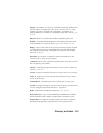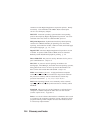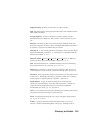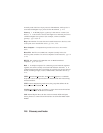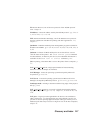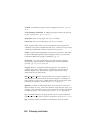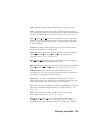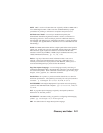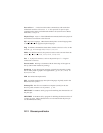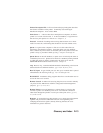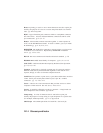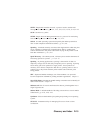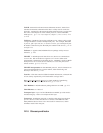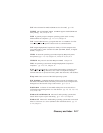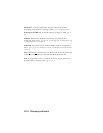
D-16 Glossary and Index
TCP/IP Transmission Control Protocol/Internet Protocol, the de facto
standard for Internet communications that is widely used on local area
networks. Technically, this means the TCP and IP protocols, but the term
has come to encompass all of the related protocols, such as TELNET,
FTP, lpd, etc. pp. 1-1 to 1-2, Chapter 4, Chapter 7, 14-7 to 14-11, A-13
to A-14.
TCP Port A method of accessing a TCP/IP service, where a device with
a single IP address can have multiple TCP ports. For example, TELNET
is port 23, lpd is port 515, etc.; to access a service, you would specify the
IP address of the device plus the TCP port number of the service. p. 4-23
through 4-25.
TCPware A popular VMS TCP/IP software package sold by Process
Software. p. 4-10.
TELNET A TCP/IP protocol that allows two devices to communicate
over a LAN. One of the devices appears as if it were a dumb serial
terminal that is hardwired to the other device. TELNET is used by TROY
XCD print servers to allow devices like PCs to access the print server
remote console. pp. 6-3, A-1 to A-3.
TELNET interpretation In the TELNET protocol, certain characters are
intercepted and handled in a special manner, rather than being sent
directly to the device. p. 4-23.
Text file A file that contains ASCII formatted information, with each line
of text usually separated by a line feed and/or carriage return.
tftp Trivial File Transfer Protocol, a simple method of transferring
information between two TCP/IP devices. pp. C-3 to C-5.
TGV Multinet A TCP/IP software package that runs on VMS. pp. 4-11.
Thin Ethernet See 10base2.
Transport layer Layer 4 of the OSI Reference Model; provides end-to-
end data integrity. TCP is an example of this layer.
Transceiver In Ethernet networks, a small box that plugs into the AUI
port of a device to allow that device to connect to the Ethernet cable.
Many Ethernet devices have one or more built-in transceivers, which
eliminate need for the AUI port.



